
Playa de los Alemanes, located on Santa Cruz Island, is a picturesque and tranquil beach known for its white sand and crystal clear waters. Surrounded by mangroves and tropical vegetation, it is an ideal place for swimming and snorkeling when the conditions are rights. Visitors can observe a variety of marine life, such as tropical fish and occasional reef sharks. The beach is a short water taxi ride from Puerto Ayora, making it easily accessible to tourists. Additionally, there are trails nearby that allow you to explore more of the island’s natural landscape.
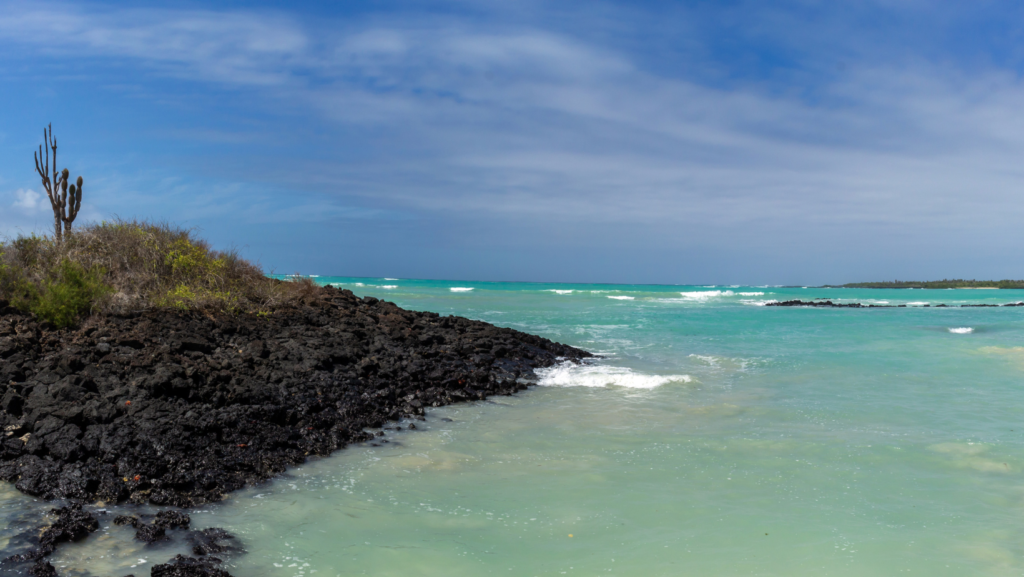

Las Grietas are fascinating geological formations located near Puerto Ayora on Santa Cruz Island. This stunning natural destination consists of a series of deep crevices filled with crystal clear water, surrounded by high walls of volcanic rock, creating a unique natural pool, loved by visitors for its beauty and opportunities for exploration.
To reach Las Grietas, visitors must take a short water taxi ride from Puerto Ayora Harbor to the Angermeyer Point dock. From there, a walk of approximately 15 to 20 minutes takes visitors through a picturesque landscape, including white sand beaches, a cactus forest, and salt flats home to flamingos and other migratory birds.
The cracks formed from fractures in the volcanic rock, filled with a mixture of fresh and salt water, creating an ideal environment for swimming and snorkeling. The clarity of the water allows for exceptional visibility, revealing a variety of aquatic life like tropical fish. The rock walls reach impressive heights, creating a dramatic and picturesque atmosphere.
The combination of stunning scenery, crystal clear waters and the opportunity to observe local flora and fauna makes Las Grietas a must-visit destination for those visiting Santa Cruz Island. This hidden corner of the Galapagos offers a unique and memorable experience, ideal for nature and adventure lovers.
You must reserve your place in advance as the National Park limits the number of visitors allowed on the site.
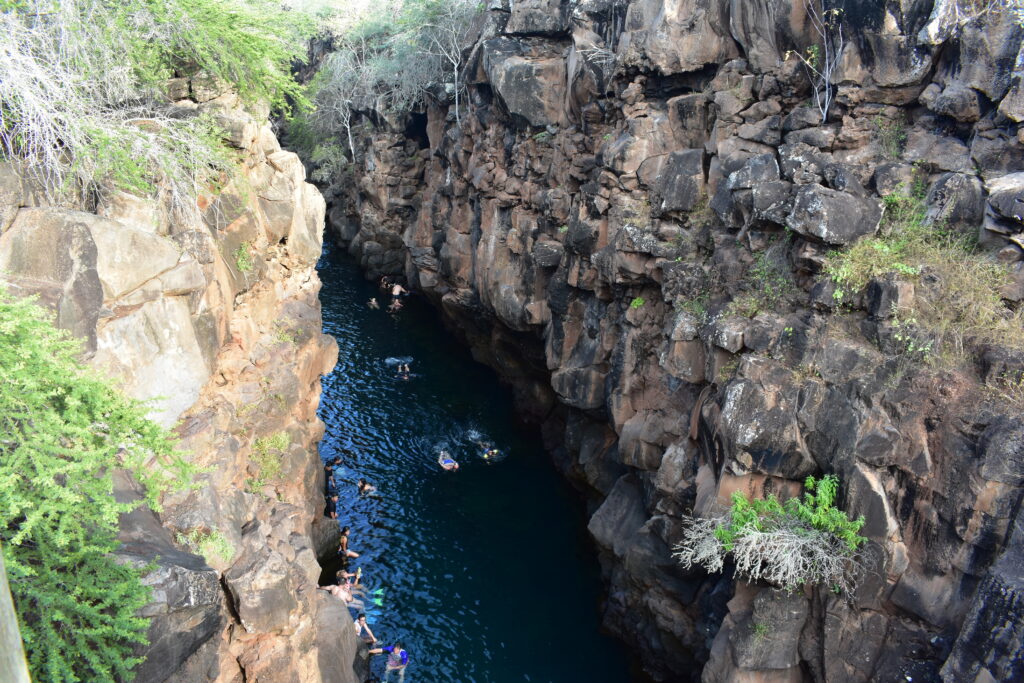
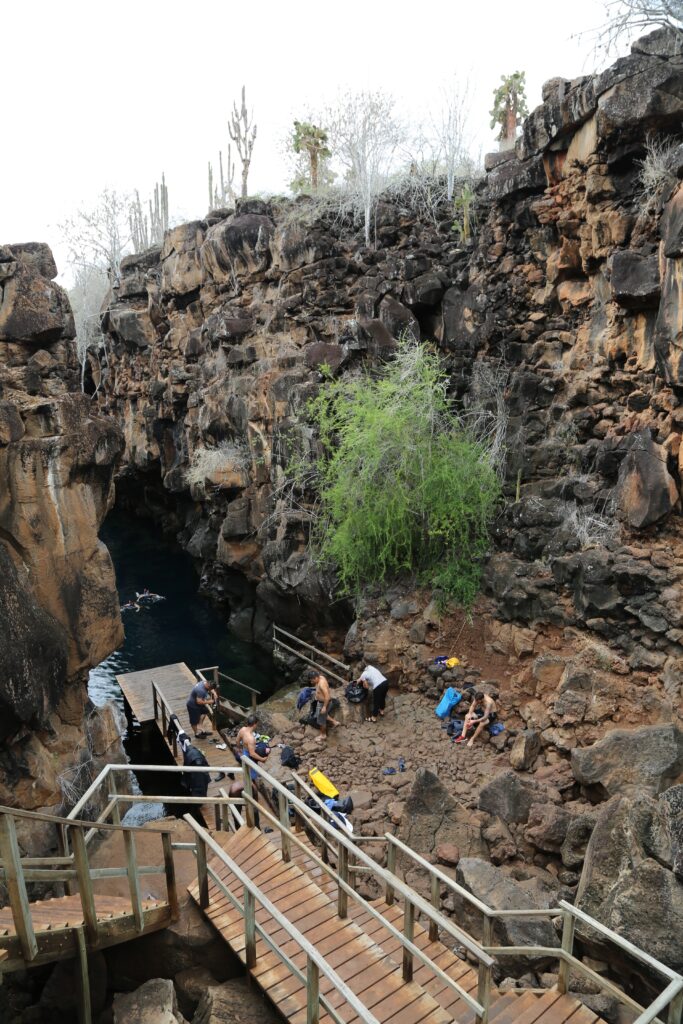
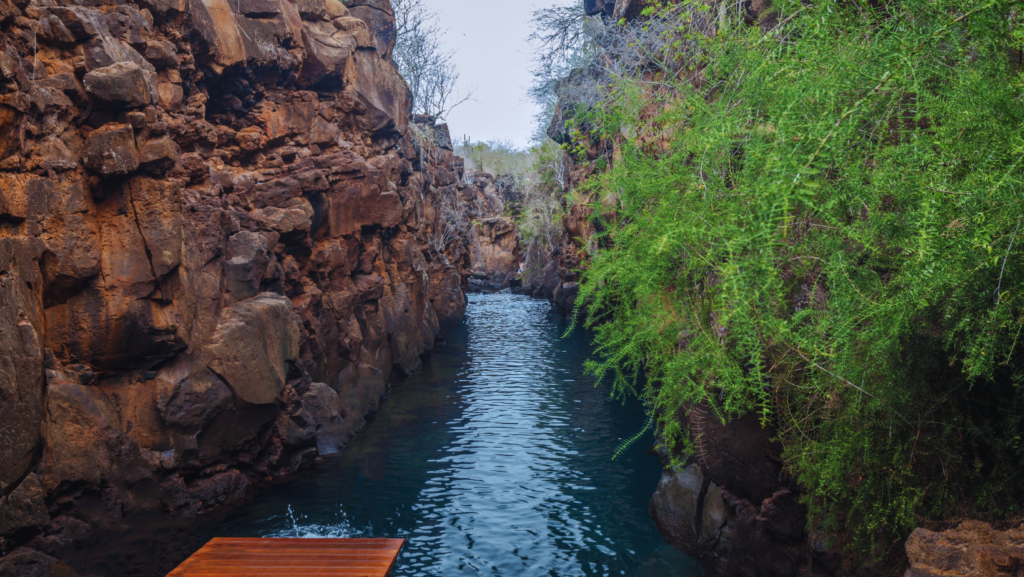
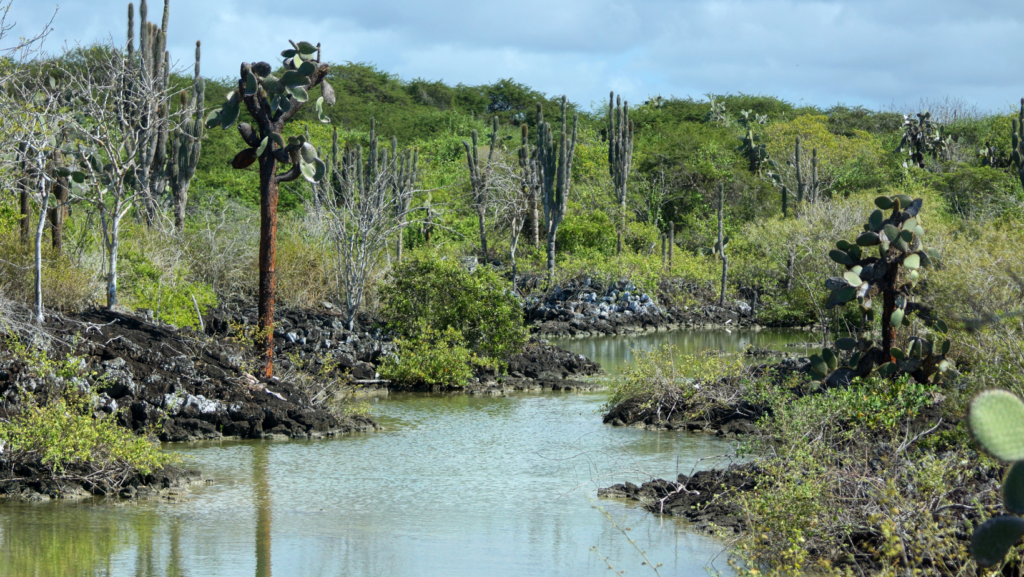
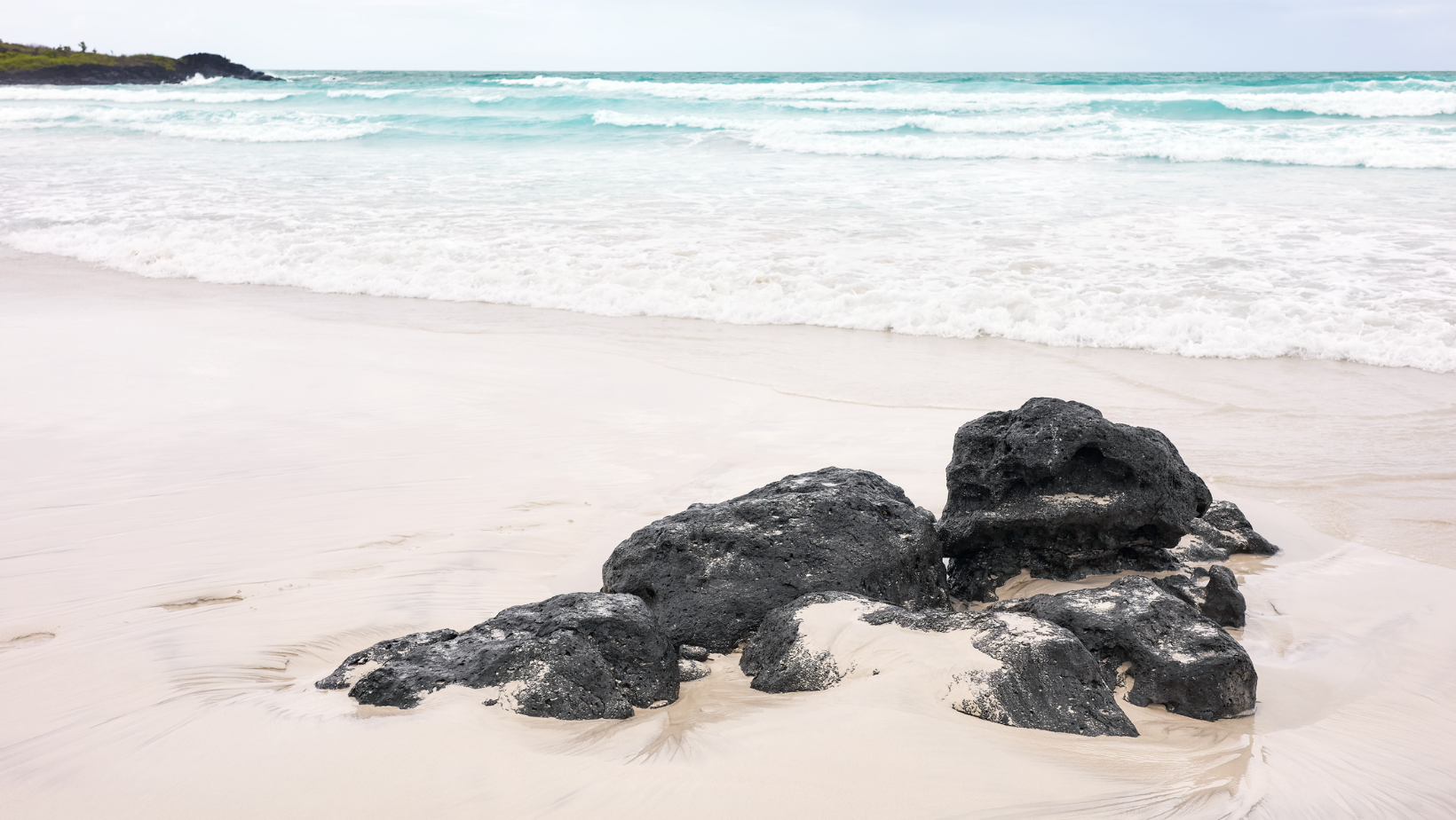
Tortuga Bay Beach, located on Santa Cruz Island, is one of the most beautiful and popular beaches on the Galapagos Islands. This magnificent beach, with its white sand and crystal clear waters, is the ideal place to enjoy the natural beauty and tranquility of the archipelago.
To reach Tortuga Bay, visitors must walk approximately 2.5 kilometers from Puerto Ayora town, along a well-marked trail that passes through an area of native vegetation, offering the opportunity to observe various species of flora and fauna along the path.
The beach is divided into two main areas : Playa Brava and Playa Mansa. Playa Brava, with its strong waves, is ideal for surfing and offers spectacular ocean views. However, due to strong currents, swimming is not recommended.
In contrast, Playa Mansa is a calm, protected bay perfect for swimming, snorkeling, kayaking, or simply walking and relaxing in its calm waters. This area is ideal for families and those looking for a safer and more serene environment to enjoy the sea.
Tortuga Bay is also a paradise for nature lovers. Visitors can see a variety of animal species there, including marine iguanas. You’ll also be able to spot migratory birds along the coast, pelicans and Darwin’s finches and, of course, the sea turtles that give the beach its name, especially during nesting season. Baby hammerhead sharks can also be seen finding refuge in the mangroves.
Conservation is a priority at Tortuga Bay and visitors must follow the rules put in place to protect this delicate environment. Pets are not allowed and it is mandatory to take all trash with you to keep the beach clean and preserve its natural beauty.
Exploring Playa Tortuga Bay is an unforgettable experience that combines the wonders of the natural landscape with the opportunity to observe Galapagos wildlife up close, while enjoying one of the most spectacular beach destinations in the world.
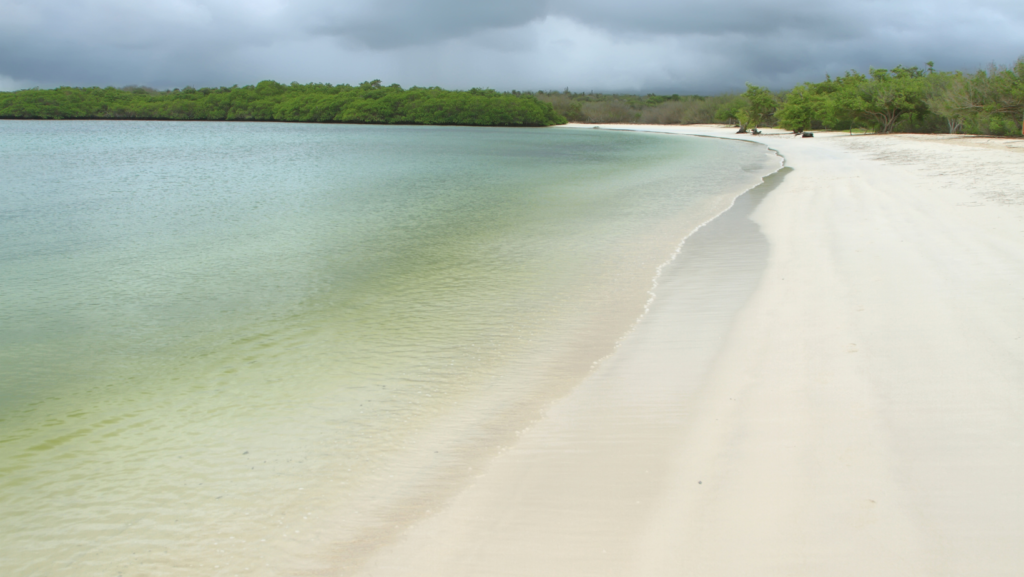
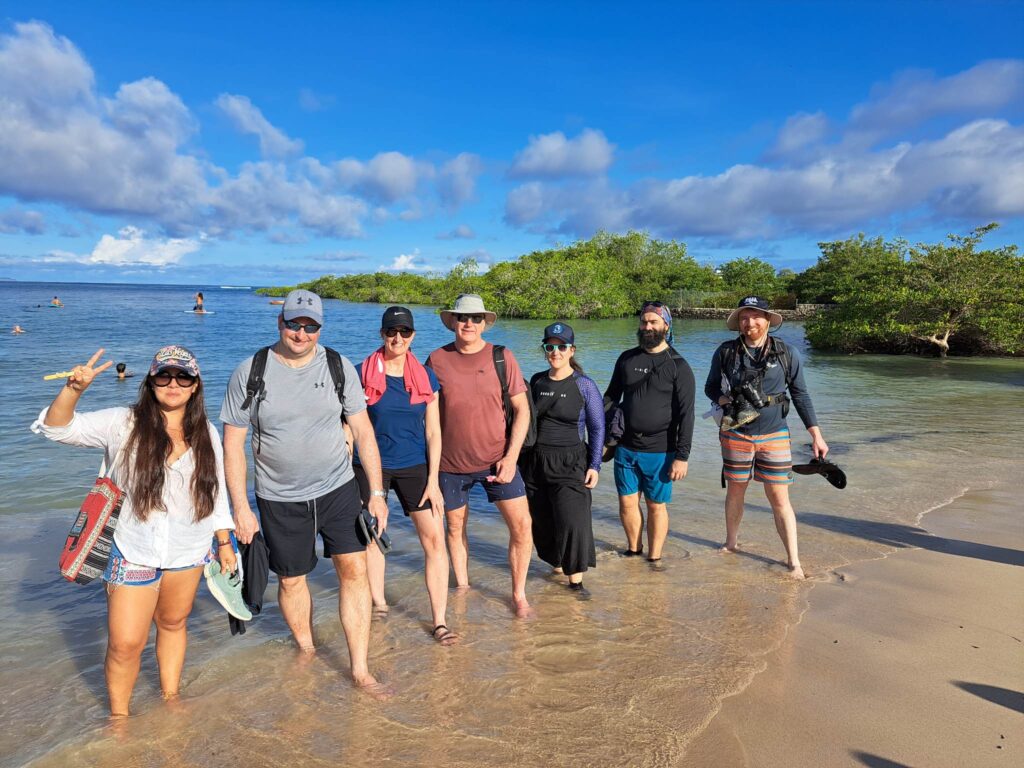

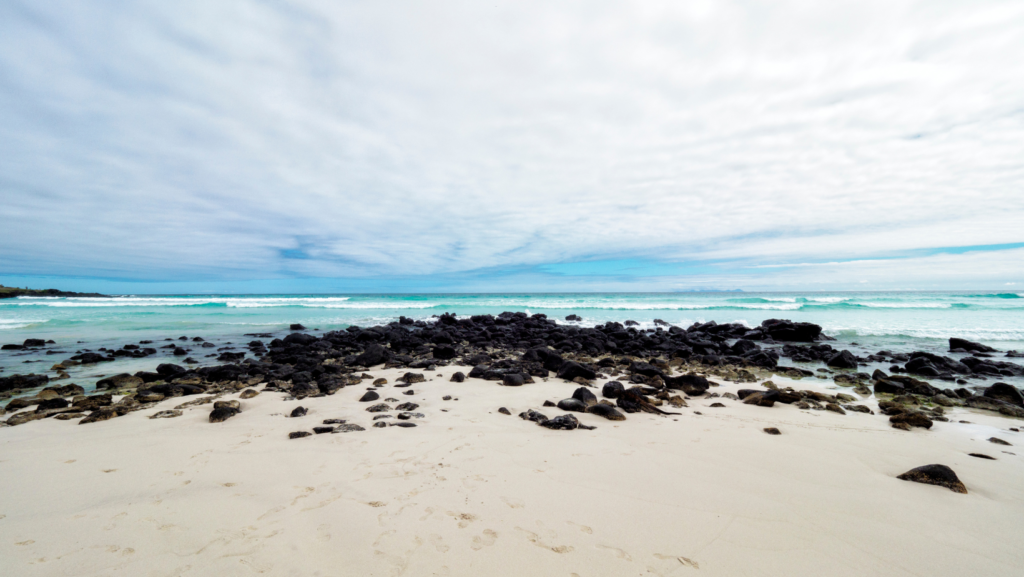
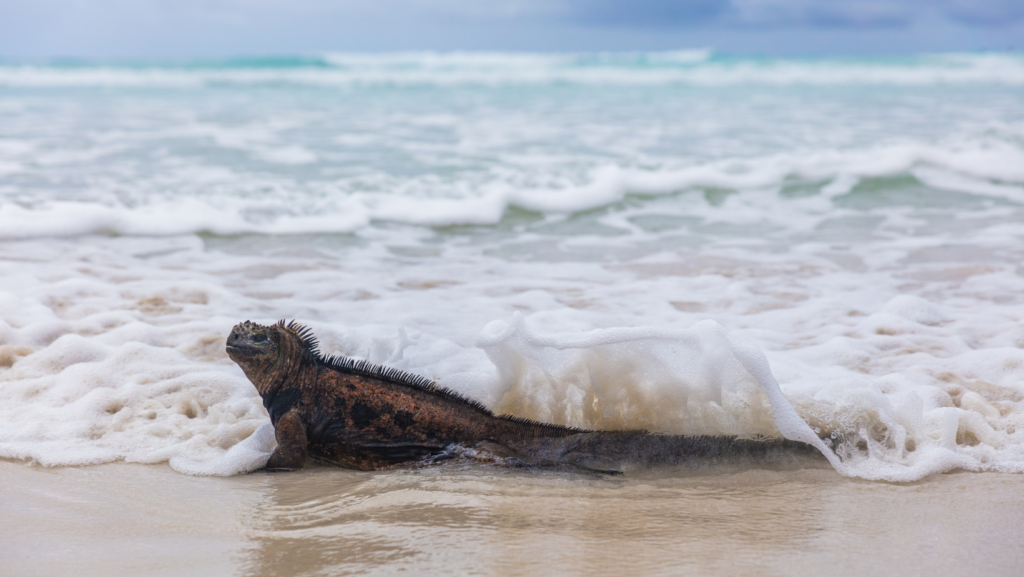
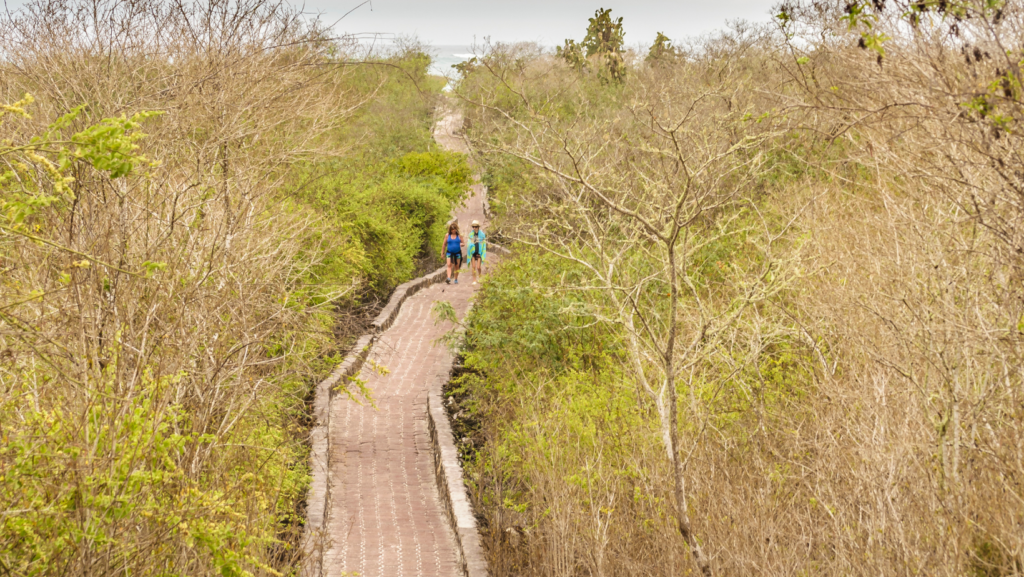
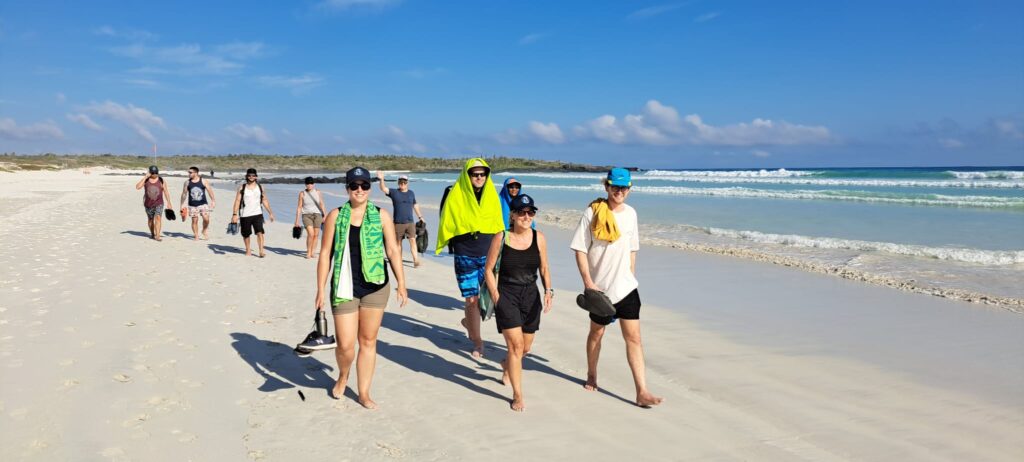
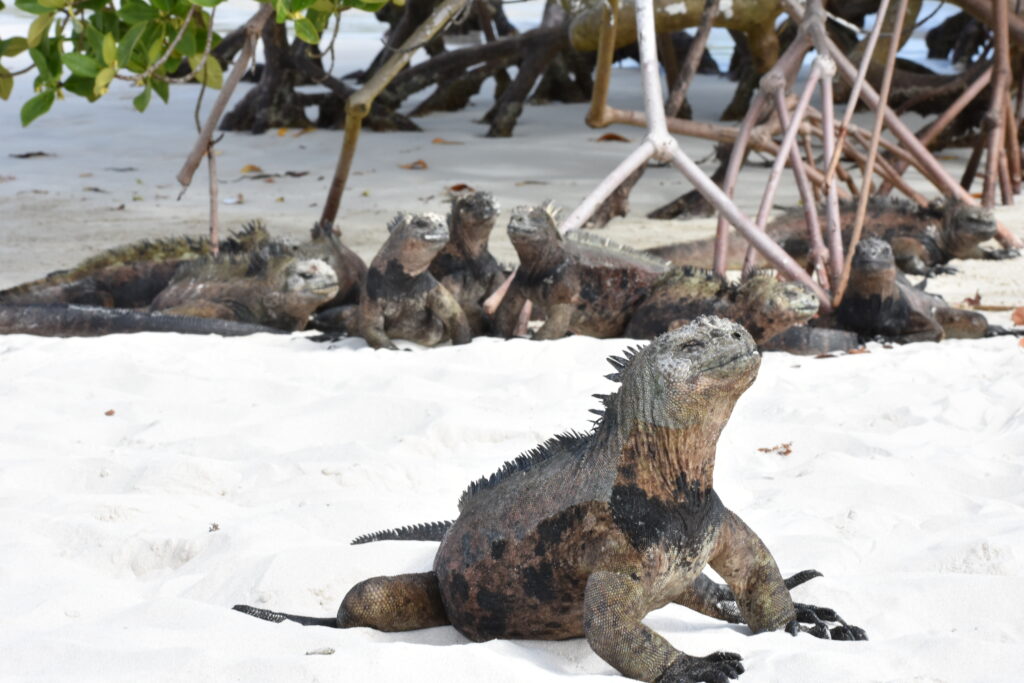
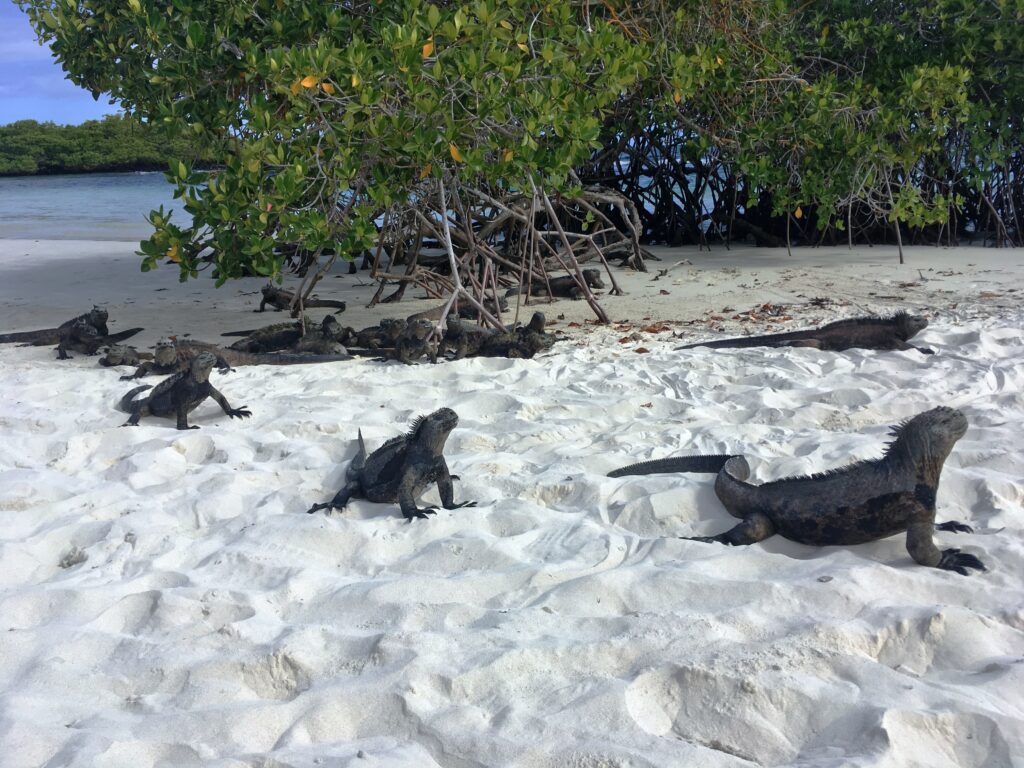
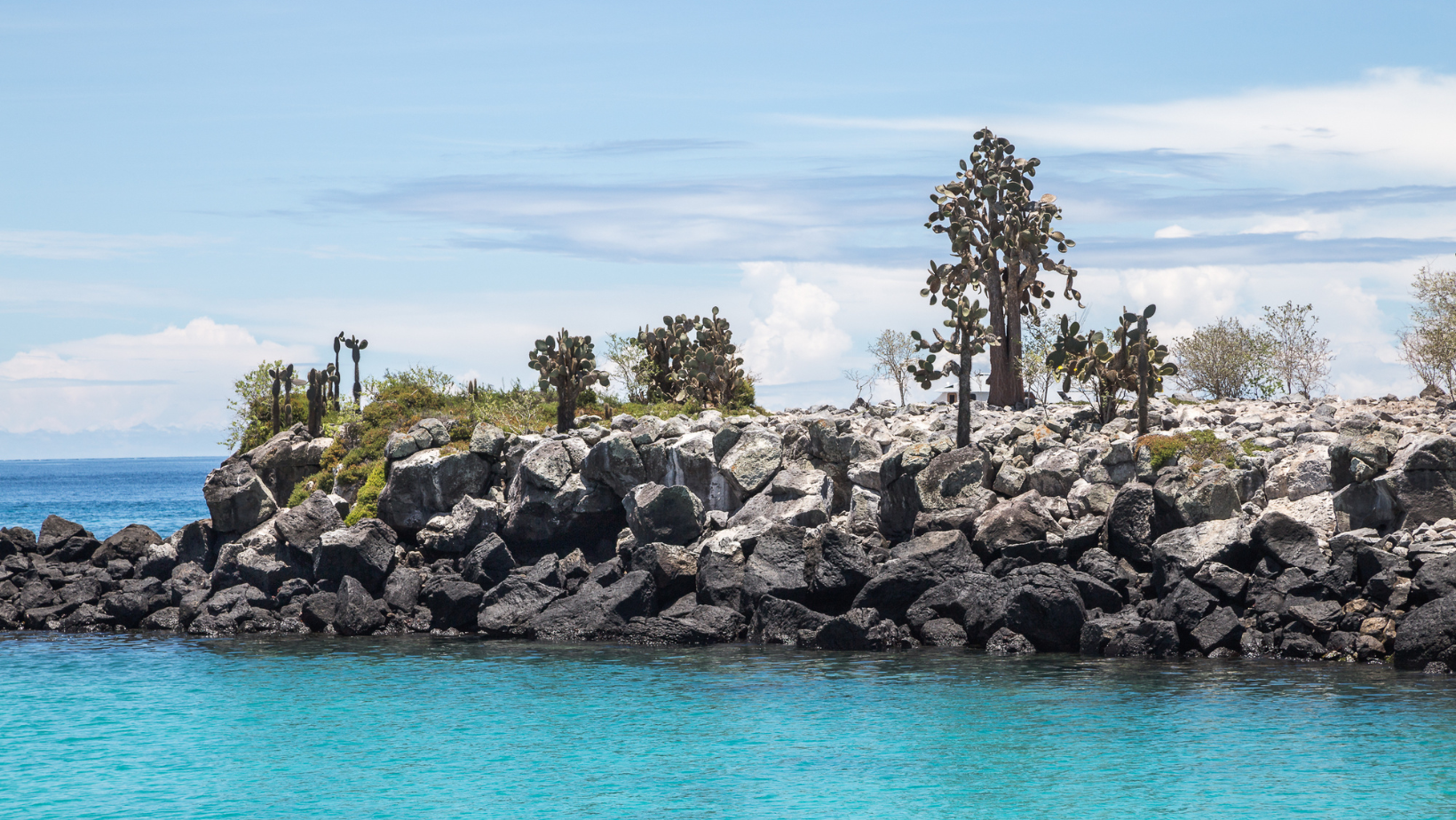
Did you know that the island of Santa Fe is one of the oldest in the entire Galapagos archipelago ? Santa Fe has underwater rock formations dating back approximately 4 million years. Its relatively flat surface is the result of tectonic uplift. In Santa Fe you will find one of the most iconic endemic species of the Galapagos : the Santa Fe land iguana. A very characteristic iguana due to its yellowish color. Another endemic specie to this island is the Santa Fe rice rat, but don’t worry, it can only be seen at night.
During this day you will also be able to observe the largest species of opuntia cactus and the Galapagos hawk (the largest predator on the island), the blue-footed booby, the Galapagos sea lion, frigate birds (royal and magnificent) and the marine iguana. Once the walk is finished, you can swim in the Encañada, where it is also possible to snorkel with sea turtles, rays, sea lions and colorful fish while swimming in the warm and crystal clear waters of this island.
Dive site
The island of Santa Fe offers several sites for scuba diving. The first site is called the Punta and is composed of a pinnacle, the underwater floor of which is composed of stacked rocks forming a downward slope to a sandy bottom at approximately 91 feet (28 m). The second site, La Cueva, is also made up of rocks, with a network of “swim throughs” allowing you to have fun. Around Santa Fe, it is possible to observe a wide diversity of colorful fish, sea lions, red-lipped batfish and white-tip sharks. This island is only visited by daily trips from Santa Cruz. No diving cruise stops here.